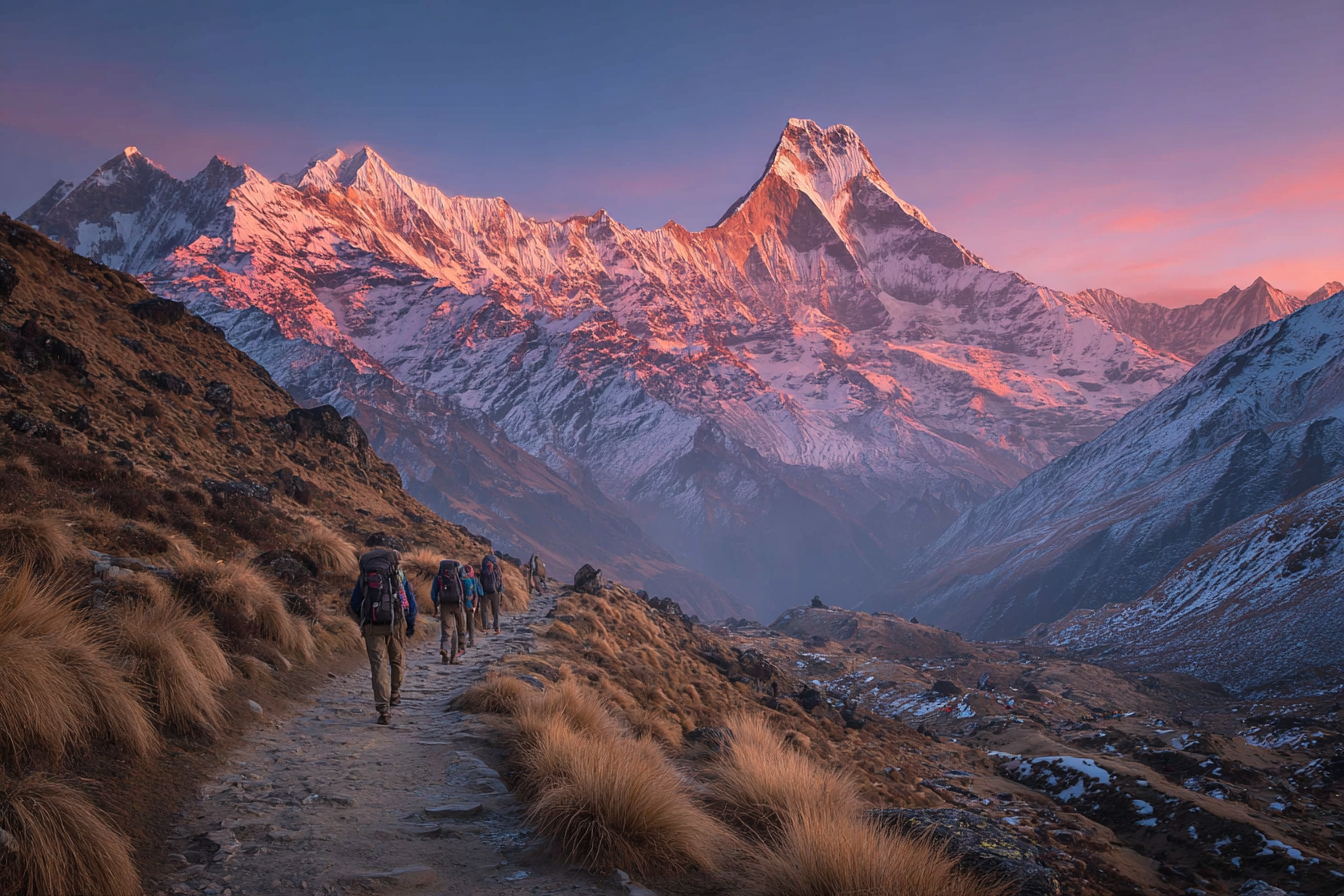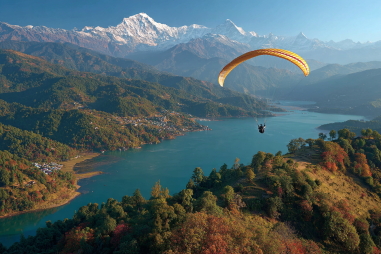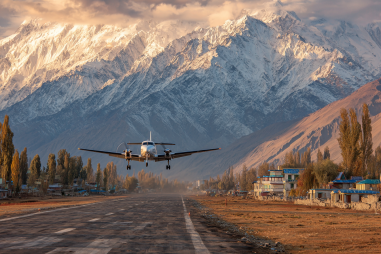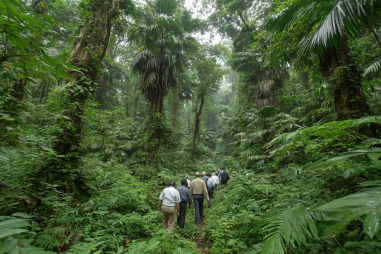Embarking on the Annapurna Base Camp trek is one of the most rewarding experiences for adventure seekers and nature lovers alike. Nestled in the heart of the Nepalese Himalayas, this trek offers stunning views of the Annapurna massif, rich cultural encounters with local communities, and a trekker’s journey through diverse landscapes, from lush forests to alpine meadows. Whether you are a seasoned trekker or a first-time adventurer, this comprehensive guide will equip you with all the information you need to prepare, enjoy, and safely navigate the Annapurna Base Camp trek.
Overview of the Annapurna Base Camp Trek
The Annapurna Base Camp (ABC) trek is a popular Himalayan journey that takes you to the base of one of the world’s highest mountains, Annapurna I, which towers at 8,091 meters (26,545 feet). The trek is a circular route in the Annapurna Sanctuary, a natural amphitheater surrounded by towering peaks. It typically takes 7 to 12 days depending on pace and itinerary variations.
The trek begins in the town of Pokhara, a gateway to the region, and passes through picturesque Himalayan villages, terraced farmlands, rhododendron forests, and high mountain passes before reaching the base camp. The experience combines stunning scenic beauty with cultural immersion into Gurung and Magar communities, making it a well-rounded adventure.
Best Seasons to Trek
Timing your Annapurna Base Camp trek is crucial for enjoying the best weather and views. The two primary trekking seasons in Nepal are autumn and spring:
- Autumn (September to November): This is the most popular and recommended season. Post-monsoon, the skies clear up, offering spectacular views of the mountains. The weather is stable, and temperatures are comfortable during the day.
- Spring (March to May): Spring brings warmer temperatures and the blooming of rhododendron forests along the trails. It’s also a fantastic time to trek but may encounter more crowds than autumn.
Winter treks are possible but much colder, and some higher-altitude parts may be snow-covered. The monsoon season (June to August) is generally avoided due to heavy rains, landslides, and poor visibility.
Required Permits and Regulations
Before you set out on the Annapurna Base Camp trek, there are two essential permits you need to obtain:
- Annapurna Conservation Area Permit (ACAP): This permit is mandatory for trekking within the Annapurna Conservation Area. It helps support conservation and sustainable tourism efforts.
- Trekkers’ Information Management System (TIMS) Card: Issued by the Nepal Tourism Board, the TIMS card is required for safety and tracking purposes.
Both permits can be obtained in Kathmandu or Pokhara, or at Kathmandu airport upon arrival. Carry your passport and passport-sized photos when applying. Make sure to keep your permits safe, as rangers check them along the trail.
Route and Daily Itinerary
The Annapurna Base Camp trek is flexible, but a classic 8- to 10-day itinerary covers the highlights comfortably:
- Day 1: Pokhara to Nayapul, then trek to Tikhedhunga (~4-5 hours)
- Day 2: Tikhedhunga to Ghorepani (~6 hours)
- Day 3: Early morning hike to Poon Hill for sunrise views, then trek to Tadapani (~5-6 hours)
- Day 4: Tadapani to Chhomrong (~5 hours)
- Day 5: Chhomrong to Bamboo (~5 hours)
- Day 6: Bamboo to Deurali (~5-6 hours)
- Day 7: Deurali to Annapurna Base Camp (~6 hours)
- Day 8: Base camp to Bamboo or back via Chhomrong (~7 hours)
- Day 9-10: Return trek to Nayapul and then travel back to Pokhara.
This itinerary features gradual altitude gain, allowing for acclimatization. Many trekkers choose to add rest days or side trips to places like Ghandruk and Jhinu Danda hot springs.
Essential Gear and Packing List
Preparation with the right gear ensures comfort and safety throughout your trek. Here’s a checklist of essentials:
- Sturdy hiking boots with good ankle support
- Layered clothing: moisture-wicking base layers, fleece or down jacket, waterproof jacket and pants
- Warm hat, gloves, and sunglasses with UV protection
- Daypack (20-30 liters) for daily essentials
- Sleeping bag rated for cold conditions
- Water purification tablets or filter
- Sunblock and lip balm with SPF
- Basic first aid kit including blister treatment
- Headlamp or flashlight with extra batteries
- Snacks and reusable water bottles
- Trekking poles for stability and reducing knee strain
Packing light but smart will make your trek a lot easier. Most teahouses provide basic bedding, but a comfortable sleeping bag is highly recommended.
Altitude Sickness Prevention and Health Tips
Altitude sickness is a serious concern on the Annapurna Base Camp trek, as the route rises above 4,000 meters. Symptoms include headache, nausea, fatigue, and dizziness.
To minimize risk:
- Ascend gradually and include rest days to acclimatize
- Stay well-hydrated and eat nutritious meals
- Avoid alcohol and smoking during the trek
- Consider medication like acetazolamide (Diamox) after consulting your doctor
- Listen to your body; if symptoms worsen, descend immediately
It is advisable to have travel insurance that covers high-altitude trekking emergencies. Carry a basic health kit and maintain hygiene to prevent common illnesses like stomach upset.
Accommodation Options Along the Trail
The Annapurna Base Camp trek is well-supported with lodges and teahouses offering accommodation every few hours along the route. These rustic lodges provide simple rooms with beds and blankets, along with home-cooked meals.
Accommodation costs vary but are generally affordable. Facilities become more basic with increasing altitude, and electricity can be limited or expensive. Booking ahead is usually not necessary but recommended during peak seasons.
Staying in teahouses is a great way to meet other trekkers and experience local hospitality. Some lodges offer charging services, Wi-Fi, and hot showers for an additional fee.
Cultural Highlights and Local Interactions
This trek brings you through vibrant mountain villages inhabited mainly by the Gurung and Magar ethnic groups. Interaction with locals provides insight into their traditions, lifestyles, and Nepalese mountain culture.
Stop to explore traditional temples, sample local cuisine like dal bhat (lentil soup with rice), and enjoy homestays where available. The Annapurna Sanctuary is also home to diverse flora and fauna that reflect the unique ecosystem in this Himalayan region.
Respect local customs and festivals if your trek coincides with any cultural events, enhancing your experience and fostering meaningful connections.
Safety Tips and Emergency Information
Safety should always be a priority while trekking in remote high-altitude regions. Here are some critical tips:
- Inform someone of your itinerary and estimated arrival times
- Keep emergency contact numbers handy, including local rescue services and your embassy
- Hire a local guide or porter if unfamiliar with the terrain
- Monitor weather forecasts and be prepared for sudden changes
- Carry a fully charged mobile phone and consider renting a satellite phone in remote areas
In case of medical emergencies related to altitude sickness or injury, helicopter evacuation is available but can be expensive, so insurance and prevention are key.
Final Thoughts and Preparation Advice
The Annapurna Base Camp trek is an incredible journey, blending thrilling adventure with serene mountain beauty and rich culture. Preparing well by choosing the right season, packing suitable gear, obtaining necessary permits, and acclimatizing properly will help you make the most of this trek.
Remember, the journey is as important as the destination. Take your time, enjoy the spectacular scenery, connect with local communities, and respect the environment. With proper planning and an open heart, the Annapurna Base Camp trek will leave you with memories to cherish for a lifetime.







